International law firms are jockeying for position in Singapore, which is evolving into a regional dispute resolution hub. Katharine Freeland reports.
Sophisticated, stable and commercially savvy, Singapore is regional headquarters to many leading businesses. And since the liberalisation of the legal sector in 2008, this compact island city-state of just 5.5m people has been attracting ever more attention from the global professional services elite. Jami Wintz McKeon, chair of US firm Morgan Lewis, summarises its appeal: ‘Everyone speaks English, it’s well-run, and the government is very open to having foreign businesses participate in their economy.’
Last year was a momentous one for the region with the creation of the Association of Southeast Asian Nations’ Asean Economic Community (AEC), a trading union with some similarities to the EU.
An expectation of increased opportunities, combined with competitive pressures in a crowded market, have created momentum in the legal sector, where liberalisation continues apace. In November 2015, the newly established Legal Services Regulatory Authority assumed responsibility for licensing domestic and foreign firms from the Singapore Law Society. The legislation which ushered in the new setup also allows non-lawyers to become partners. In Asia, this type of innovation in legal service provision is unusual, and signifies a willingness by Singapore’s authorities to make tough decisions to keep the country competitive.
Throughout 2015 there was a steady stream of tie-ups between international and established local firms, including Dentons with Rodyk & Davidson and Morgan Lewis with Stamford Law. New entrants also appeared in the market: Mississippi, US firm Butler Snow, offshore specialist Carey Olsen and Asia firm King & Wood Mallesons.
Kevin Wong, partner at Linklaters in Singapore, argues that a physical presence is now considered important. ‘Our Singapore office operates as a regional hub for south-east Asia and India, and demand for multi-jurisdictional work remains strong in the region,’ he says. ‘Singapore is a springboard into markets like Indonesia and India, where we have recently announced new hires.’
Reynolds Porter Chamberlain recently entered the market through a joint law venture (JLV) with Singapore firm Premier Law which comes into effect in May. This allows the firms (which remain separate professional entities) to offer joint services to clients in international and Singapore matters. Litigation services are the main driver. As managing partner Jonathan Watmough reflects, Singapore law is often the law of choice in regional deals: ‘The combination will allow our insurance and marine practices to advise on Singapore law, a critical development for clients as the importance of Singapore continues to grow in these sectors.’
Revolving door
The past 30 years has seen a revolving door of arrivals and departures, as well as alliances forming and fracturing. Morgan Lewis exited Singapore in 2000, while Freshfields Bruckhaus Deringer left in 2006.
For all its emphasis on being business-friendly, Singapore was late in the game in internationalising its legal services sector. The government’s decision in 2008 to introduce Qualifying Foreign Law Practice (QFLP) status allowed foreign law practices to practise in limited areas of Singapore law for the first time, if granted a licence by the Ministry of Law. Licensed firms could now hire Singapore-qualified lawyers.
Six firms were in the vanguard: Allen & Overy, Clifford Chance, Herbert Smith (now Herbert Smith Freehills), Latham & Watkins, Norton Rose (now Norton Rose Fulbright) and White & Case. Four more came on board in 2012: Gibson, Dunn & Crutcher, Jones Day, Linklaters and Sidley Austin.
Since then many firms have changed tack to take advantage of updated and flexible ways of collaborating with local firms, such as formal law alliances (FLAs) – ‘best friends’ arrangements between one or more Singapore, and one or more foreign, firms. These were introduced as a more flexible alternative to QFLPs by the government in 2012. Herbert Smith Freehills decided not to renew its QFLP in 2014. Instead, the firm entered into a ‘best friends’ relationship with local firm Prolegis, cementing this arrangement in 2015 with an FLA. Freshfields Bruckhaus Deringer relaunched its Singapore offering in 2012, while Morgan Lewis has now re-entered the market through its merger with Stamford Law.
Private client specialist Withers also opted for an FLA when it joined forces with KhattarWong in February 2015, creating Withers KhattarWong. Managing director Margaret Robertson explains the rationale: ‘The alliance with KhattarWong has immediately provided a great deal more strength in-depth, in a fashion that would be almost impossible to achieve organically,’ she says. ‘With this has come a much greater capacity for working with clients across south-east Asia, offering a full range of corporate, banking, property, tax and litigation services to sectors such as insurance and hospitality.’ With low rates of personal tax and one of the highest concentrations of the very rich, it is not hard to see the appeal to private client firms.
Butler Snow’s new Singapore office will concentrate on advising its clients in Hong Kong, Malaysia, Indonesia, China, Taiwan and beyond on US tax and estate planning advice. ‘We selected Singapore because it is a leading financial hub, has a business-friendly environment and offers a strong legal framework,’ says Kurt G Rademacher, who will head the Singapore office. ‘Its position as a convenient gateway to the rest of Asia, where many Butler Snow clients are located, makes it extremely attractive.’
Amid the FLAs and the JLVs, Morgan Lewis’s approach is a first. ‘Ours is the first full merger of its type, unprecedented in extent and structure and representing a true integration between a Singapore-based premier law practice and a global legal powerhouse,’ McKeon points out. Morgan Lewis Stamford now claims to be the only law firm in Singapore allowed to offer both foreign law and full Singapore law counsel across all of its practice areas.
The firm hopes this will extend its reach, says Suet-Fern Lee, managing partner of the Singapore office: ‘[MLS] provides a strong, profitable base for our Asia sector practice, as well as strong China opportunities – it enhances the strengths of our other important Asia locations in Tokyo and Beijing. In time, we believe it will yield entry into India and south-east Asia’s economies.’
In numbers
$101.2bn
Value of M&A in Singapore in 2015, up from $50.7bn in 2014
51%
Value of Singapore M&A deals accounted for by the technology sector
$37bn
Amount paid for US semiconductor maker Broadcom by Singapore- and US-based Avago Technologies
4
Number of investor-state disputes referred to arbitration centre SIAC in 2014
13
Number of IPOs in 2015, raising $450.7m on the Singapore Exchange – down from 23 IPOs raising $2.3bn in 2014
Rather than spearheading deals in the region from Singapore, as happened in the past, an office here is now more likely to be part of a multi-jurisdictional Asian footprint, offering a ‘one-stop shop’ for clients from China, India and Asean countries. Linklaters’ Wong explains: ‘Combined with our alliance with Widyawan & Partners in Indonesia and our “best friends” relationship with Talwar Thakore & Associates in India, we provide a strong and unique cross-border capability.’
Dentons is also banking on its combination with Rodyck enhancing its Asian credentials. Global chairman Joe Andrew says: ‘As the world’s first truly polycentric law firm – with no one global headquarters or dominant culture – our combination with Rodyck stands out as unique in a global marketplace crowded with international firms that were founded in, and are still run from, the UK and the US.’
Last year presented some well-publicised challenges for Singapore: such as the downturn in China, political insecurity, and weak oil and commodities prices. In 2015 the Singaporean economy was estimated to have grown by 2.1%, slowing from 2.9% in 2014 and the weakest performance since 2009. Capital markets activity was sluggish compared with booming stock markets in Hong Kong and China, while there was a dearth of project finance work – both traditional key work streams for law firms.
According to corporate finance advisers Duff & Phelps, 13 IPOs raised US$450.7m on the Singapore Exchange in 2015, compared with 23 IPOs raising $2.3bn in 2014.
However, activity was stronger in banking and finance, M&A overall, and new sectors: ‘We are also seeing promising opportunities in fintech, dispute resolution and financial regulation,’ Wong reports.
The value of M&A doubled in Singapore in 2015, up to $101.2bn from $50.7bn in 2014. This deal range included private equity-funded deals, and 85% were outbound acquisitions, as Singaporean companies acquired businesses elsewhere in the world. There were 13 transactions valued at over $1bn, compared with eight in 2014. ‘The rationale for such a high level of deal activity has been lower interest rates and expectations that these will increase, coupled with the pick-up of economic activity in the US and sluggish growth in other markets,’ says Srividya Gopalakrishnan, managing director of Duff & Phelps.
One of the largest deals of 2015 was the $37bn acquisition of US semiconductor maker Broadcom by Singapore- and US-based Avago Technologies. Skadden, Arps, Slate, Meagher & Flom advised Broadcom on the deal. California-based corporate partner Leif King explains its significance: ‘The deal was important not only for its size – it was the largest semiconductor deal of 2015 – but also for its complexity. This was a cross-border deal with complex legal, tax and regulatory challenges. For example, one form of consideration offered was exchangeable partnership units that were the economic equivalent of stock and could not be sold, transferred or hedged for a certain period. The transaction included an election mechanism whereby all shareholders were given the option to receive stock, cash or units.’
Last year was a period of intense consolidation in the semiconductor industry, which is likely to continue into 2016. ‘Of course, the availability of low-cost acquisition financing in 2015 was an important factor as well,’ King adds.
The technology sector accounted for 51% of M&A deal value in Singapore in 2015, while the real estate sector created the largest deal volume at 21.8%. Another significant technology deal was the $781m amalgamation of Chinese private equity fund CB Medical Holdings and Biosensors International, a Singapore-based med tech company specialising in cardiovascular devices and imaging equipment. WongPartnership, Conyers Dill & Pearman and Fangda Partners advised CB Medical Holdings, while Lee & Lee advised Biosensors.
Agreeing where to disagree
The same impetus that has kept Singapore firmly on the map for business in south-east Asia has also led to the city-state becoming one of the prime centres for international commercial arbitration. Singapore has a strong common law tradition and a reputation for stable governance in a complex and volatile region, as well as being a legal and financial safe haven. ‘Singapore is the ideal base and is beginning to be regarded as a preferred choice for conducting international arbitrations,’ Wong says. ‘It has been very successful in carving out this niche.’
January 2015 saw the launch of the Singapore International Commercial Court, a division of the Singapore High Court which is intended to provide an alternative means of resolving disputes. The new forum is designed to be more attractive to international users than domestic Singapore courts, since it offers: a panel of distinguished international judges; the option of being represented by foreign lawyers; the determination of foreign law on the basis of submissions rather than oral evidence; and the exclusion of Singapore’s laws of evidence and limits to rights of appeal.
The addition of a new court, intended as a companion rather than a competitor to existing institutions, completes a tripartite dispute resolution offering together with the Singapore International Arbitration Centre (SIAC) and the Singapore International Mediation Centre, launched in 2014. ‘International dispute resolution is not merely confined to the SIAC,’ says Sean Wilken QC of 39 Essex Chambers in Singapore. ‘Singapore is clearly and consciously positioning itself to be a dispute resolution hub for the region.’
SIAC has grown exponentially over the past few years, aided by dedicated government support. It is now the equal of the more established Hong Kong International Arbitration Centre (HKIAC) as a seat for complex arbitrations – and there are many similarities between the two. ‘Both HKIAC and SIAC are located in jurisdictions with established traditions of respecting and upholding arbitral independence. Similarly, awards from both are likely to be treated with respect,’ Wilken says. The arbitration centres of Hong Kong and Singapore could be regarded as complementary rather than competitors, as they serve different needs and preferences.
‘If you look at international arbitrations being issued in both SIAC and HKIAC, you will see that SIAC has, year on year, increased the number it is handling because it is catering to a different market’, Wilkins explains. ‘HKIAC has, historically, catered for outbound and inbound disputes from China and still has that work. Singapore, on the other hand, can be an attractive venue for Chinese and Indian parties to arbitrate – being viewed by both as neutral territory.’
Singapore is also well placed geographically to handle disputes from western Australia and Indonesia. The simultaneous growth of the two seats and their combined international appeal has contributed to growing confidence in arbitration in the Asia-Pacific region. This development is reinforced by the fact that jurisdictions such as South Korea and Malaysia are starting to become more ‘arbitration-savvy’.
Singapore has the world’s biggest international arbitration hearing complex, Maxwell Chambers, which opened in 2010. It is considered ‘state of the art’ and houses hearing facilities as well as other international ADR institutions. In 2015 WilmerHale partner Gary Born, doyen of the international arbitration world, became its president. ‘Singapore is one of the premier arbitral seats in the world: it combines a first-class arbitral institution (SIAC), a deep and sophisticated legal profession, a generally pro-arbitration judiciary and arbitration statute and a good pool of experienced arbitrators,’ Born says.
Top practitioners from Europe can attest to this success: One Essex Court, Essex Court Chambers, 39 Essex Chambers and Stone Chambers are among sets with an office there, while Allen & Overy’s Judith Gill QC moved to its Singapore office to bolster its Asian arbitration offering in January 2015.
Over the years, SIAC has been marketed aggressively and hosted the biennial ICCA (International Council for Commercial Arbitration) conference in 2012. The government has granted much legislative time to amending the International Arbitration Act to make the regime even more attractive; for example, introducing tax perks for foreign arbitrators and arbitration firms in Singapore.
Some of its growth as an arbitration centre is down to the rapid development of south-east Asia’s economies – growth that has generated more disputes. But it is also in competition with other arbitration centres, including London. This means, notes Stephen Denyer, Law Society head of City and international, that ‘Singapore is threat and opportunity in equal measure’. Denyer adds: ‘There is very little that prevents English legal professionals from using Singapore as an arbitration centre. Indeed, many international firms have an arbitration team based in Singapore. While the English legal profession can’t sit back and rest on its laurels, English law is still the law of choice for international arbitration, even if the physical location of the arbitrational hearings is not in England and Wales.’
‘Government investment in SIAC has certainly created success, but another factor is that businesses view Singapore as a neutral location free from corruption,’ says one arbitration partner in a leading law firm, who asked to remain anonymous. ‘Many leading banks and multinationals have headquarters here and this is another reason for having the seat of arbitration in Singapore.’ As international technology and media businesses move into Asean and India, more disputes in the sector will undoubtedly be arbitrated in Singapore.
Global Arbitration Review reports a diverse caseload for SIAC. The most frequent users are parties from China, closely followed by the US and India. SIAC recently released a draft of its new rules for investor-state arbitration, designed to provide states with alternatives to the International Centre for Settlement of Investment Disputes and the United Nations Commission on International Trade Law rules. Previous changes have already attracted more investor-state work; in 2014, four such investor-state disputes were referred to SIAC.
The rise and rise of SIAC is a significant draw for international firms. ‘Singapore is fast growing into an important arbitration and dispute resolution centre, as well as an internationally competitive legal services hub,’ McKeon says. ‘The integrated practice in Singapore will further extend our global reach as a dispute resolution powerhouse.’
Looking ahead
There are indications that the year ahead will be as eventful as 2015 for Singapore. Much depends on the volatility of the Asean economies, and hopes of an improved economic outlook in the region. Current contenders for the next FLA announcement are US firm Reed Smith or Simmons & Simmons. In any case, expect more alliances and new faces in the legal services sector.
Katharine Freeland is a freelance journalist


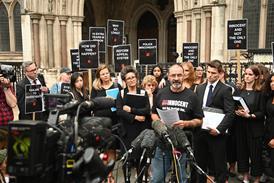
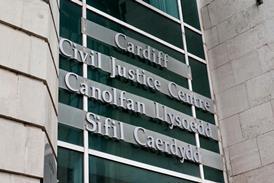




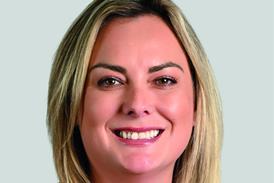









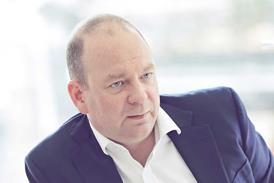



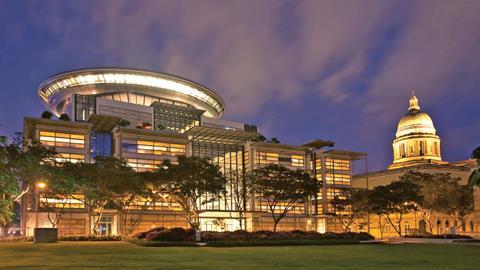







No comments yet